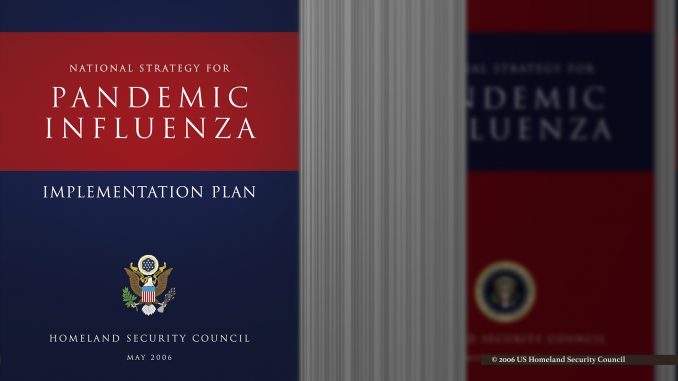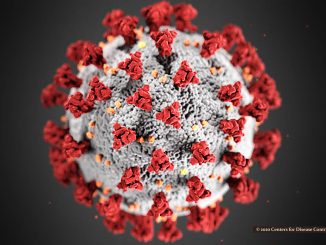
Ongoing coverage of novel coronavirus disease 2019 continues to feel like a story being told from a point that never quite starts from the beginning. [1-3]
If there’s a strategy to this, a part of that would undoubtedly serve interests of seeking to establish “winners” and “losers” in the blame game. Labeling COVID-19 “Chinese Virus” may be argued inaccurate from the perspective of a narrative that does not originate until first US patient presentation in the State of Washington on January 19. [4-8]
That, of course, was nothing compared to the recent period of governors’ calls for alarm with claims of inevitable ventilator shortages — inevitably discussed in terms of who shoulda done what, when? as peg for establishing sold responsibility (anywhere else) for the crisis. [9-12]
It was a kerfuffle that appears to have since ended like a correspondent’s report for Weekend Update by Roseanne Roseannadanna. Without missing a beat, on to deployed testing as panacea. [13,14]
So where should the tale of COVID-19 situational awareness, planning development, and implementation have begun? [15,16]
Answer: Well-before “Patient Zero.” [17]
On October 18, 2019, for example, “The Johns Hopkins Center for Health Security in partnership with the World Economic Forum and the Bill and Melinda Gates Foundation hosted Event 201, a high-level pandemic exercise …. [18]
The exercise illustrated areas where public/private partnerships will be necessary during response to a severe pandemic in order to diminish large-scale economic and societal consequences.
In 2005, the United States Homeland Security Council under President George W Bush published its twelve-page National Strategy for Pandemic Influenza. By way of context, it noted that “despite annual vaccinations, the US faces a burden of influenza that results in approximately 36,000 deaths and more than 200,000 hospitalizations each year. In addition to this human toll, influenza is annually responsible for a total cost of over $10 billion in the US.” [19]
A total of 42,514 deaths in the US, 170,397 worldwide, have been attributed to novel coronavirus disease 2019 as of today. [20]
The Bush Administration Strategy document went on to note that pandemics “have occurred intermittently over centuries.
The last three pandemics, in 1918, 1957 and 1968, killed approximately 40 million, 2 million and 1 million people worldwide, respectively.
Foundationally, states were noticed that of expectation that they were to be “the front lines of a pandemic” and that states “and communities should have credible pandemic preparedness plans to respond to an outbreak within their jurisdictions.” Individuals and the private sector are called upon to play a central role under this construct as well (see additionally in particular “Do1Thing,” which is frequently endorsed). [21-26]
Assessing the above against the State of Michigan “Strategic Plan for the State, Fiscal Years 2020 to 2025,” published on February 6 of this year, neither generally nor is specific to the Michigan Department of Health and Human Services section were our responsibilities for making pandemic preparations delineated. [27]
In her budget recommendations for fiscal years 2020 and 2021, Governor Gretchen Whitmer included “ongoing funding of $25.9 billion, of which $4.7 billion comes from the state’s general fund. Among “six key investments” that she highlighted, only one was anywhere near the ballpark of attending to the sort of health crisis spotlighted by the call to action published fifteen years ago: An allocation of $13.9 million “to allow DHHS to more effectively monitor and respond to environmental public health threats and to expand laboratory capacity to investigate the potential contamination of public water and food sources and assess their effects on human and community health.” [28]
Logic behind unambiguous designation of states as primarily responsible for having complete, well-maintained stockpiles that include ventilators, N95 masks, and sundry personal protection gear to support front-line personnel was discussed in the 233-page National Pandemic Influenza Implementation Plan, published in 2006. [29-31]
While a pandemic may strain hundreds of communities simultaneously, each community will experience the pandemic as a local event. In the best of circumstances, patients and health care resources are not easily redistributed; in a pandemic, conditions would make the sharing of resources and burdens even more difficult.
… communities should anticipate that in the event of multiple simultaneous outbreaks, there may be insufficient medical resources or personnel to augment local capabilities.
When each state in turn steps up to such responsibilities, it avoids unnecessarily burdening the federal government — which has its own set of time sensitive moves to implement. “In terms of its scope, the impact of a severe pandemic may be more comparable to that of war or a widespread economic crisis than a hurricane, earthquake, or act of terrorism.
In addition to coordinating a comprehensive and timely national response, the Federal Government will bear primary responsibility for certain critical functions, including: (1) the support of containment efforts overseas and limitation of the arrival of a pandemic to our shores; (2) guidance related to protective measures that should be taken; (3) modifications to monetary policy to mitigate the economic impact of a pandemic on communities and the Nation; (5) procurement and distribution of vaccine and antiviral medications; and (6) the acceleration of research and development of vaccines and therapies during the outbreak.
Finally, again: The Implementation Plan emphasized that, while countermeasures including “flattening the curve” may, ideally, provide time for communities to prepare, avoid exceeding resource availability. However, they are “unlikely to reduce the total number of people who become ill or the impact the pandemic will have on any one community.” [32]
Multiple waves of infection and consequent death are inevitable. The point that there will be a second wave was underscored, because that is not the question. Rather, it was to help set the stage for setting public expectations and planning for what follows.
Formally dubbed “inter-pandemic periods” serve vital function as a period for society, economies, and responders to recouperate as they experience return to larger sense of normalcy with relaxed governmental impositions on their behavior.
Additionally, “the medical community must have awareness of the ongoing epidemiological analysis and community-wide interventions being recommended by public health leaders, and the public health community must have situational awareness of the evolution of the disease that can only come from connectivity to the emergency departments and other acute care settings where patients with influenza are presenting.
The inter-pandemic period presents an indispensable opportunity to establish and test these relationships.
Ultimately, these are the concerns that documentation would have as proper replacement for the apparently more exciting but, as a practical matter, less consequential drama of ventilator shortage crisis discussions.
References
- Coronavirus (COVID-19) (home page).
- “Coronavirus Disease 2019 (COVID-19)” CDC: Centers for Disease Control and Prevention.
- “Novel Coronavirus Reports” CDC.
- “5 Reasons Why We Play the Blame Game” Susan Krauss Whitbourne PhD (September 19, 2015) Psychology Today.
- “How To Stop the Blame Game” Nathanael J Fast (May 13, 2010) Harvard Business Review.
- “Rep Dan Crenshaw: Fortitude | Real Time with Bill Maher (HBO)” Real Time with Bill Maher (April 17, 2020) YouTube.
- “First Case of 2019 Novel Coronavirus in the United States” Hollianne Bruce, Amanda Cohn MD, Chas DeBolt, George Diaz MD, Keith Ericson, Michelle L Holshue, Scott Lindquist MD, Kathy H Lofy MD, Christopher Spitters MD, Ahmet Tural, MD, John Wiesman, Sara Wilkerson, et al (January 31, 2020) New England Journal of Medicine.
- “Trump on ‘Chinese virus’ label: ‘It’s not racist at all” Quint Forgey (March 18, 2020) Politico.
- “Mechanical Ventilation” Constantine Manthous MD and Martin Tobin MD (April 2020) American Thoracic Society.
- “Ventilator Stockpiling and Availability in the US” (April 1, 2020) Johns Hopkins Center for Health Security.
- “Michigan may need another 8,000 ventilators as coronavirus outbreak worsens” Riley Beggin (March 30, 2020) Bridge.
- “The Ventilator Shortage That Wasn’t” Kyle Smith (April 17, 2020) National Review.
- “Weekend Update: Roseanne Roseannadanna On Smoking” (November 18, 1978) NBC.
- “Covid-19 antibody tests can help people rejoin society, but some are stuck in China” Nelli Black, Scott Bronstein, Curt Devine, and Drew Griffin (April 17, 2020) CNN.
- “Enhancing Situational Awareness to Prevent Infectious Disease Outbreaks from Becoming Catastrophic” M Lipsitch and M Santillana (2019) Current Topics in Microbiology and Immunology.
- “Pandemic” (April 2, 2020) Ready (Official Website of the Department of Homeland Security).
- “Who is ‘patient zero’ in the coronavirus outbreak?” Fernando Duarte (February 23, 2020) BBC.
- Event 201: A Global Pandemic Exercise (home page).
- National Strategy for Pandemic Influenza President George W Bush (November 1, 2005) United States Homeland Security Council.
- “COVID-19 Coronavirus Pandemic” (April 20, 2020) Worldometer.
- “Pandemic Influenza Planning” MDHHS: Michigan Department of Health & Human Services.
- “Michigan Prepares” State of Michigan.
- “Emergency Services – Emergency Planning & Preparedness” Washtenaw County Michigan.
- “Pandemic Planning” Health Department, Jackson County Michigan.
- “Effective community disaster preparedness starts on the individual level” Bradley MacDonald (January 20, 2019) mLive.
- Do1Thing – Emergency Preparedness (home page).
- Strategic Plan for the State: Fiscal Years 2020 to 2025 (February 6, 2020) State of Michigan.
- Executive Budget: Fiscal Years 2020 and 2021 Gretchen Whitmer and Chris Kolb (March 5, 2019) State of Michigan.
- “N95 Respirators and Surgical Masks (Face Masks)” United States Food & Drug Administration (FDA).
- “Personal Protective Equipment” Occupational Safety and Health Administration (OSHA), United States Department of Labor.
- National Pandemic Influenza Implementation Plan President George W Bush (May 2006) United States Homeland Security Council.
- “Flattening the curve for COVID-19: Expert Howard Markel weighs in” Howard Markel MD, PhD (March 11, 2020) Institute for Healthcare Policy & Innovation, University of Michigan.



